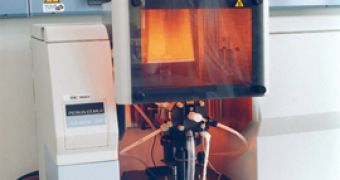Atomic spectroscopy is the determination of elemental composition by its electromagnetic or mass spectrum, based on the interactions of light and matter, and a widely used technique with diverse applications.
Holger Schmidt, associate professor of electrical engineering, at the University of California, Santa Cruz, and his collaborators at Brigham Young University, created the first fully planar device designed to study atoms and molecules on a chip-based platform with integrated optics.
Atomic absorption spectrometers are one of the most commonly sold and used analytical devices, and relies on light passed through a collection of atoms. Because this energy is well-defined, an atom's identity (i.e. what element it is) can be identified by the energy of this transition. The wavelength of light can be related to its energy. It is usually easier to measure the wavelength of light than to directly measure its energy.
To do this, they used a monolithically integrated, planar rubidium cell on a chip, a development of f hollow-core optical waveguides based on antiresonant reflecting optical waveguide (ARROW) principles, which could have a range of practical applications, like quantum information processing, gas detection sensors and frequency stabilization for lasers.
"To stabilize lasers, people use precision spectroscopy with bulk rubidium vapor cells. We could build a little integrated frequency stabilization chip that would do that more easily than a conventional frequency stabilization circuit," Schmidt said.
The rubidium reservoirs were incorporated on a chip, that connects the reservoirs to hollow-core waveguides, in order to fill the optical beam path with rubidium atoms. The result is a vapor cell that is completely self-contained and has an active cell volume about 80 million times smaller than a conventional cell.
"We used rubidium as a proof of principle, but this technique is applicable to any gaseous medium. So it has potentially far-reaching implications," Schmidt said. "Fundamental concepts in quantum information processing have been demonstrated in principle using bulk rubidium systems. To be practical you can't have big optical tables in all the places you would want to use it, but now we can make this technology more compact and portable," Schmidt said.

 14 DAY TRIAL //
14 DAY TRIAL //